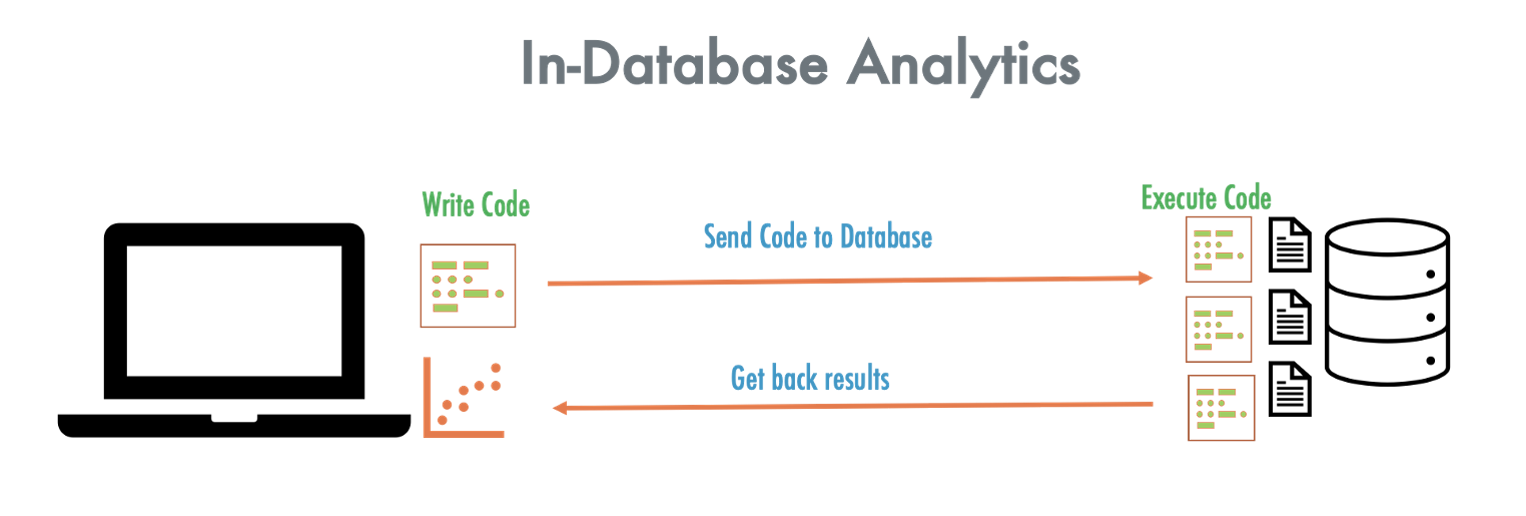Though this article is on data analytics, let me start with space analytics. In space technology, a rover is a small vehicle that lands on a planet, such as Mars, and then makes an analysis of the surface. The rover is capable of very sophisticated analytics of complex terrains, atmospheres, and surfaces.
The reason why the rover is capable of such advanced analytics
is that it is not just a sample collection tool. It does most of the analytics directly on the planet.
Now try to imagine the space analogy in the context of data analytics. The database is the planet and the analytic algorithm is the rover. With in-database analytics, the analytic algorithm is run inside the database. This is much more powerful compared to using analytics just to collect samples from the database.

With
Teradata Vantage, in-database analytics is built-in. Here are the top reasons why you should consider in-database analytics.
1. Minimize data movement
Transferring data from a database to a local laptop for analysis may not be a very smart thing to do. It involves lots of data movement and manual work. This implies loss of work efficiency and loss of automation opportunity. With the power of in-database analytics, you can minimize all redundant data movements. This will also save you from the trouble of managing isolated copies of data on your local laptop.
2. Perform sophisticated analytics
It is a fact that you can perform very sophisticated analytics on a complete dataset as compared to a sample. Take an IoT scenario where you need to analyze data coming from hundreds of sensors.
IoT sensor data requires sophisticated analytics such as time-series analysis, anomaly detection, event prediction.
With such a high number of sensors, it will be almost impossible to download all IoT sensor data on your laptop. Also working on sample data will lead to wrong results.
With Teradata Vantage, you can perform all sophisticated IoT sensor data analysis directly inside the database and on complete data. This will help you do the analytics without the risk of any wrong conclusions.
3. Avoid Security risk
Data scientists generally care more about algorithms compared to security. There are high chances that many data scientists have very sensitive data downloaded on their laptops to do analysis.
This is a very risky situation that can even lead to financial loss to the company as well as damage to the company's reputation. You may not realize this until it happens to you.
With in-database analytics, there is no need to use your laptop as a “shadow” database. With in-database analytics, you can now avoid putting yourself and your company at risk.
4. Machine learning model operationalization
Operationalization of the machine learning model is much more than just model scoring. The key to a successful operationalization of a machine learning model is to integrate the model score or prediction with business data.
For example, in an equipment anomaly detection use case, it is not sufficient to just predict the anomaly correctly. Operationalization also means knowing where exactly the equipment is located as well as the impact of failure. If you predict the equipment anomaly correctly, but you do not know where the equipment is located, you cannot operationalize the machine learning model.
With in-database analytics, machine learning model scoring happens inside the database. This helps to link the model score with the rest of the data and thus make the model score more actionable
5. Standardize Business User Interface
Though many data scientists prefer using different algorithms and technologies, business users prefer stability in the user interface. Imagine a situation where the business user uses a BI tool to analyze customer data but is given a Jupyter notebook for customer churn prediction. This can be a nightmare for business users as well as the proliferation of user interfaces.
With in-database analytics, you can leverage the BI tools which business users are comfortable with, and also for advanced analytics. This helps to scale advanced analytics amongst the business users. You can make machine learning ubiquitous within your organization through the power of in-database analytics.
Pranay is Principal Data Scientist for Europe, Middle East and Africa (EMEA) for Teradata. His job role enables customers to realize business benefits using advanced analytics and data science. He has led initiatives with many clients to operationalize Artificial Intelligence and Machine Learning projects, and thus enable clients to benefit from advanced analytical solutions.
As a recognized expert in Teradata Vantage, Pranay is also a regular speaker at Teradata internal and external events. He is recognized as a top writer for AI in digital media. Pranay has degree in Data Science, MBA and Computer Engineering.
View all posts by Pranay Dave